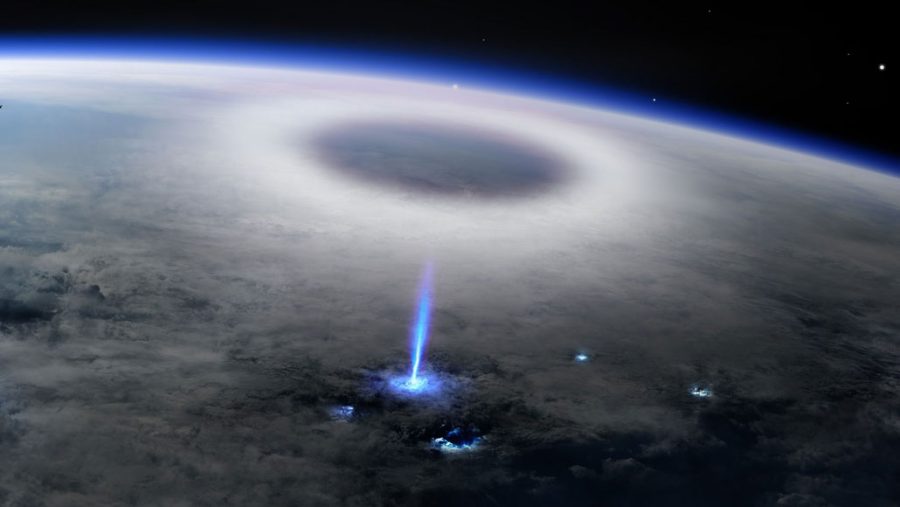Space Lightning and Sprites: mythical creature, or atmospheric phenomenon?
January 28, 2021
A mysterious “blue jet” of lightning was first captured on camera erupting from an upper-atmospheric thunderstorm in July of 1989. But, according to Victor Pasko, they had seen this strange phenomenon many times before it was captured on video, both from aircraft and from people on the ground. As technology advances, we’re able to gain a better understanding of the storms that create these reactions to assess their impact on the world. Studying these storms allows us to gain further understanding of what creates this phenomenon. It also could help determine how radio waves travel through the earth.
Different from normal lightning that shoots down towards the earth, “blue jet” lightning fires up into the atmosphere and reacts with nitrogen in our stratosphere to create its blue color, according to Science News. Known by NASA as transient luminous events, this blue lightning has other colorful forms, such as sprites, which are created through a similar stratospheric reaction but appear red. In February 2019, scientists on the International Space Station captured information about a storm using a variety of cameras and light-sensing equipment. As stated by Torsten Norbert, a scientist at the National Space Institute, when the storms take place, “we observe five intense, approximately 10-microsecond blue flashes from a thunderstorm cell. One flash initiates a pulsating blue jet to the stratosphere.”
The primary reason behind why it took so long, and was so difficult, for this stratospheric lightning to be captured is because of its placement in the world. Storms in the upper atmosphere that produce this blue lightning are too low for most satellites’ capabilities, and too high for weather balloons to reach, which means that special equipment is needed to record these thunderstorms.







